Are Chilean Rose Tarantulas Good Pets? Complete Owners Guide
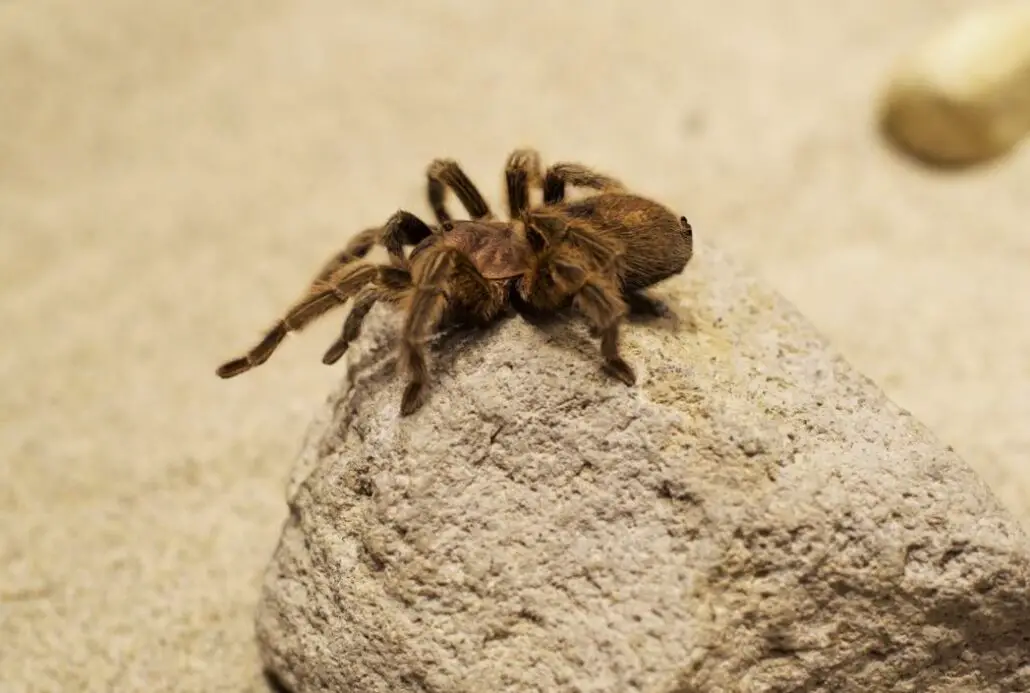
If you enjoy spiders, then tarantulas can be a fascinating pet.
Hours of entertainment can be provided by watching your tarantula’s mannerisms and habits.
The Chilean Rose Hair Spider could be the perfect spider if you’re a beginner spider keeper.
Where Do They Come From?
The origin of the Chilean Rose Tarantula comes from the dry grasslands and deserts of Chile, Argentina, and Bolivia.
These spiders eat insects, small lizards, worms, and even small mammals. The color range is from light grey, subtle pink to a vibrant rose.
Where Are They Found?
The Chilean Rose Tarantula can be located in pet stores. It’s widely found throughout North America because of the cheap export of wild-caught spiders.
Plus, captive breeding through hobbyists makes them readily available as well.
Alternative names for these spiders are Chilean Rose, Chilean Rose Haired Tarantula, Chilean Fire Tarantula, and Chilean Flame Tarantula.
A Chilean Tarantula All About?
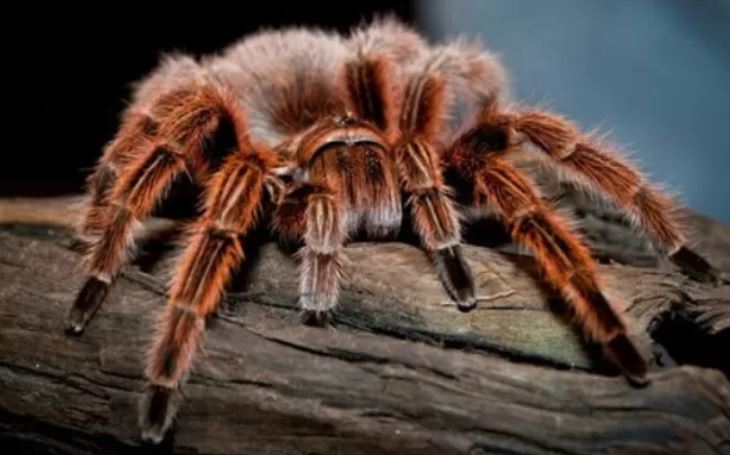
Size:
The size of these spiders is between 4 1/2 to 5 ½ inches across the legs. The males live for 4-5 years while the female can live up to 20 years.
Personality:
These spiders are docile, calm, and submissive if they aren’t handled too often. They prefer to be in a quiet, safe place and go about their day hunting, burrowing, and rearranging the materials that make up their enclosure.
Temperament:
If your spider feels threatened, she may eject tiny hairs from her body. These hairs are located on her abdomen and contain mild venom. These tiny hairs, called urticating hairs, can cause a rash or irritate your skin.
Tendency to bite:
Your spider may bite you if she feels threatened. The venom isn’t fatal, but the bite is painful. Also, if handled too frequently, she can become fussy or aggressive. Your spider will raise her front legs to alert you that she’s potentially going to bite you.
Colors:
The colors of your spider can be dark brown, tan, or grey body with pink, red, or copper hairs.
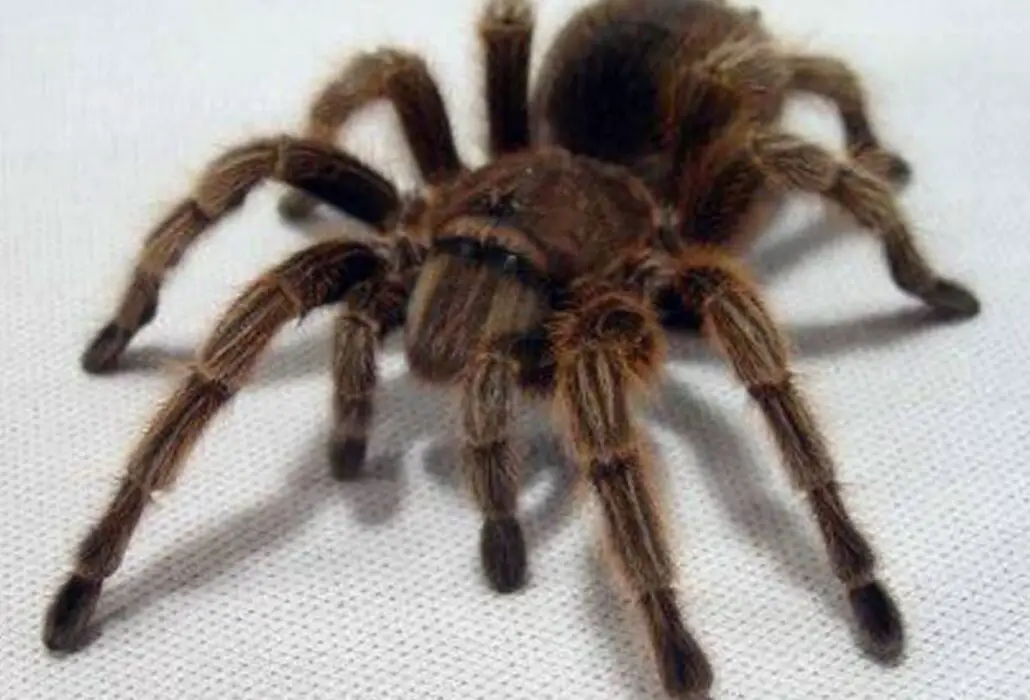
Maintenance:
Your Chilean Rose Hair Spider makes a good pet because it is a low-maintenance pet. To keep your spider healthy, a few things to maintain proper temperature and humidity levels in her habitat.
When she is in the molting stage, do not handle your spider. The skin that is grown during this period of time is fragile. It needs to harden, or else the skin can tear and cause fatal injuries.
Handling:
It can be dangerous to handle your tarantula too frequently because she is very fragile. If you drop her by mistake, her abdomen can rupture. A ruptured abdomen is often fatal to your spider.
These spiders move pretty slowly, making them ideal for when you want to handle your spider. First, gently coax your spider onto your flat hand using a paintbrush or a pen.
Be sure to hold your tarantula low over a soft surface so that if she does fall, she only has a short drop. If you drop her from a higher height, she may not survive.
Price:
You can buy your Chilean Rose from a pet store as long as you know that the spider has been kept in superb condition.
But a breeder is more conscientious than a pet store. Plus, when you buy from a breeder, you know you’re not depleting the species in the wild.
Also, most pet stores only sell short-lived males because long-lived females cost more. You can identify a male tarantula by the enlarged pedipalps, the second pair of legs in the front. Once mature, a male spider will look for a female to breed with. If he can’t find one, he will die soon after the spider is a year old.
Male tarantulas are usually sold for about $20. A female Chilian Rose hair bought from a breeder will start at around $60, and the price can be higher.
Tips for Raising a Chilean Rose Tarantulas
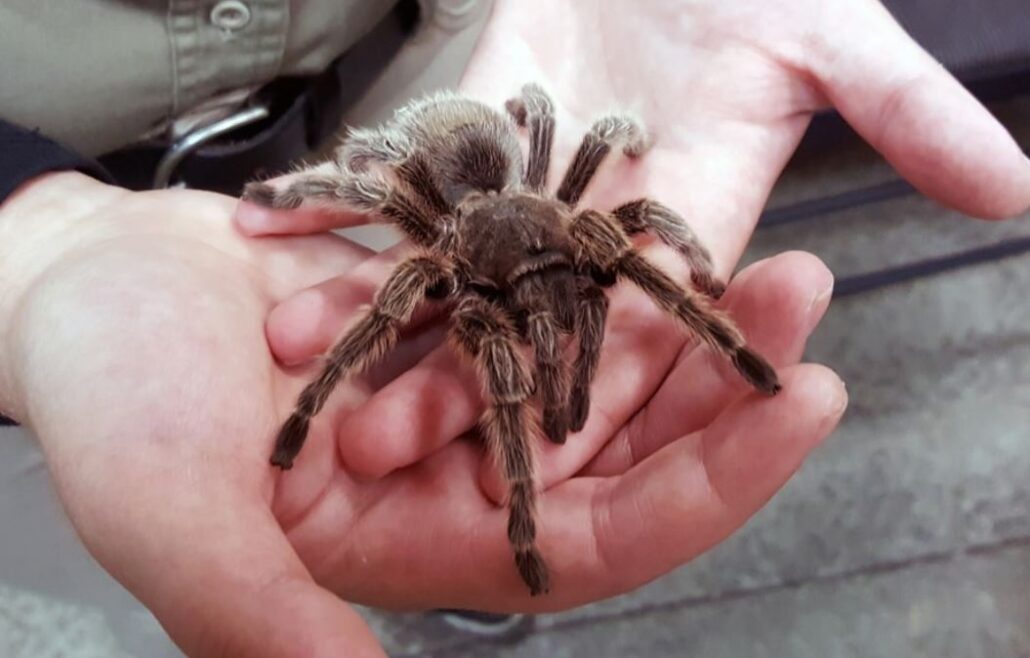
Your Chilean Spider will require little space, which is excellent news for the beginner spider keeper. A small 5-to-10-gallon tank or a terrarium is the perfect size to set up a habitat. The width of your spider’s living space needs to be three times wider than her leg span and only as tall as when your tarantula is standing on end.
Setting up habitat:
The enclosure you do purchase needs to be escape-proof. It should have only a side opening. This is because you’ll find that your spider will enjoy hanging upside down at the top of the tank. So, if there’s a side opening, your tarantula won’t fall when you service her tank.
Plus, there is a potential danger for her hanging from the top of the tank for this species. If you startle her and she falls, her egg-like abdomen could split open, which would cause your spider’s death.
In your spider’s habitat, there needs to be a hiding space or two. It could be a hollowed-out log, an accessory bought at a pet store, or even a clean piece of cool-looking driftwood.
You can also use half of a small clay flower, or cork bark can be used for shelter as well. Artificial plants can be strategically placed or live plants for good coverage if you’re an advanced spider keeper, so your spider will feel safe and calm.
Substrate:
What to use on the bottom of the tank is called the substrate. This bedding lets your spider burrow and also lessens the harshness of the plastic or glass floor. You will need two to three inches of soil, vermiculite, peat moss, or shredded coconut husk placed on the bottom of the tank. Try to use a material that you can tamp down.
You can add a little water to get a perfect consistency, but you will want to use a material that will dry out quickly if your spider spills her water bowl. Your tarantula will become anxious if the substrate is constantly wet.
Heat:
Because your spider is a desert dweller, she is hardy and less sensitive to heat source fluctuations. It’s because cold desert nights and warm desert days are what is expected in their wild habitat. The ideal temperature should be around 80 degrees F with a 70% humidity level.
Plus, Chilean Rose tarantulas aren’t fond of humidity and will become agitated if there is a damp spot somewhere in their cage. So, maintaining a dry environment, but not parched, is critical to keeping this desert spider happy.
Food and water:
Your Chilean Rose tarantula will eat live crickets and other large insects as their prime food source. The most essential thing to remember is that insects need to be pesticide-free. Your spider won’t spin a web. Instead, she will stalk her prey and inject it with venom.
So, you will need to keep pet crickets in their own habitat and provide the crickets with a diet that keeps your spider healthy. Your tarantula will only eat once or twice a week as an adult, but if your spider is immature, she will need to be fed more frequently. A small water dish will be enough for your spider to drink from and maintain humidity.
Sometimes your spider may go through a period of fasting, depending on her dietary needs. Call your vet if she goes longer than a couple of weeks without eating or has a shriveled abdomen. You will want to have your vet check her out to ensure that your spider isn’t malnourished, dehydrated, injured, or stressed out.
Roommates:
Unless you are planning to mate your spider, she shouldn’t have a roommate. These spiders prefer to be alone. If you place two female spiders together, they can become aggressive toward each other. If you keep the male in with the female too long, she will eat the male.
You will also need to keep your spider away from other pets in your home. Your tarantula will bite your other pet or pets if she feels threatened.
Common Health Problems
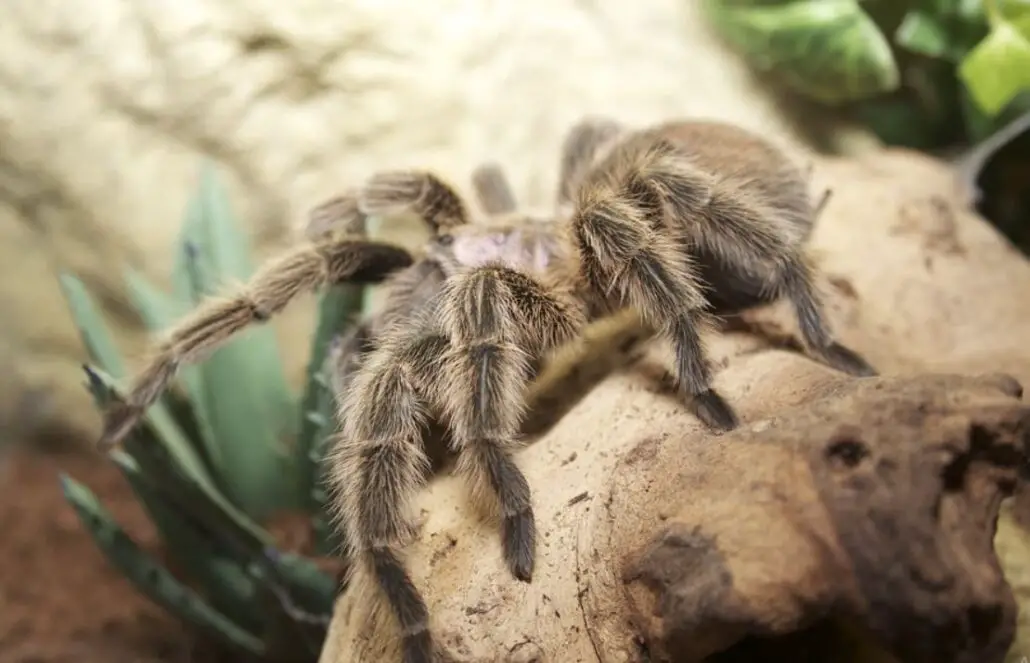
Some common health problems could occur with your spider. For example, if your spider is acting erratic, spending most of her time at the top of her cage, or is climbing her walls all the time, there could be too much humidity in the environment. You can maintain the humidity range of 65% to 70% by purchasing a relative humidity gauge or meter.
All tarantula go through a molting period, and yours will be no different. It’s a stressful time for your spider. She may or may not eat and remain still for an extended period of time. She may even turn over and lie on her back.
Don’t be worried if this happens. She’s not dead. Your tarantula is going through a natural growth process, but if she’s disturbed, she could die. Once she has completed her molt, don’t handle her for a few weeks since your spider’s skin won’t be hardened.
Conclusion
If you are interested in becoming a spider keeper, then the Chilean Rose tarantula is the perfect spider for you. If you would like more information, click this link below:
https://www.youtube.com/watch?v=V5hAg1yB_fI


